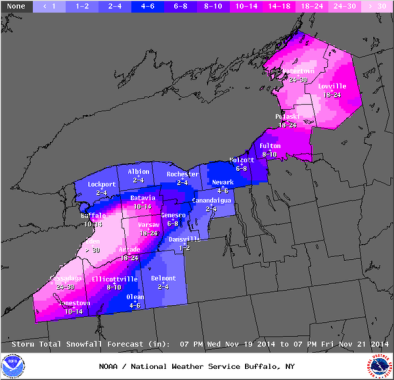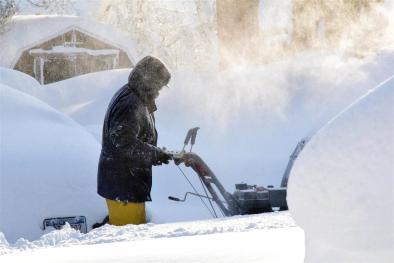Science Source
Increasing Great Lake–Effect Snowfall during the Twentieth Century: A Regional Response to Global Warming?
- States the influence of the Laurentian Great Lakes on the climate of surrounding regions is significant, especially in leeward settings where lake-effect snowfall occurs
- States changes in lake-effect snowfall may represent a regional-scale manifestation of hemispheric-scale climate change, such as that associated with global warming
- Examines records of snowfall from several lake-effect and non-lake-effect sites throughout most of the twentieth century in order to 1) determine whether differences in snowfall trends exist between these settings and 2) offer possible linkages between lake-effect snow trends and records of air temperature, water temperature, and ice cover
- Presents a new, historic record of oxygen isotope [δ18O(CaCO3)] data from the sediments of three eastern Finger Lakes in central New York as a means of independently assessing changes in Great Lakes lake-effect snowfall
- Results reveal a statistically significant increasing trend in snowfall for the lake-effect sites, whereas no trend is observed in the non-lake-effect settings
- States that records of air temperature, water temperature, and lake ice suggest that the observed lake-effect snow increase during the twentieth century may be the result of warmer Great Lakes surface waters and decreased ice cover, both of which are consistent with the historic upward trend in Northern Hemispheric temperature due to global warmin
Related Content
Science Source
| Geophysical Research Letters
Distinctive climate signals in reanalysis of global ocean heat content
Balmaseda, Magdalena A., Trenberth et al
Headline

Feb 15, 2016 | MPR News
Buffalo mega snowstorm tied to climate change?
Headline

Feb 15, 2016 | NBC News
Freezing on East Coast? Blame a Super Typhoon and Maybe Global Warming
Headline

Feb 15, 2016 | AccuWeather
Monster Storm Becomes Strongest on Record for Alaska


